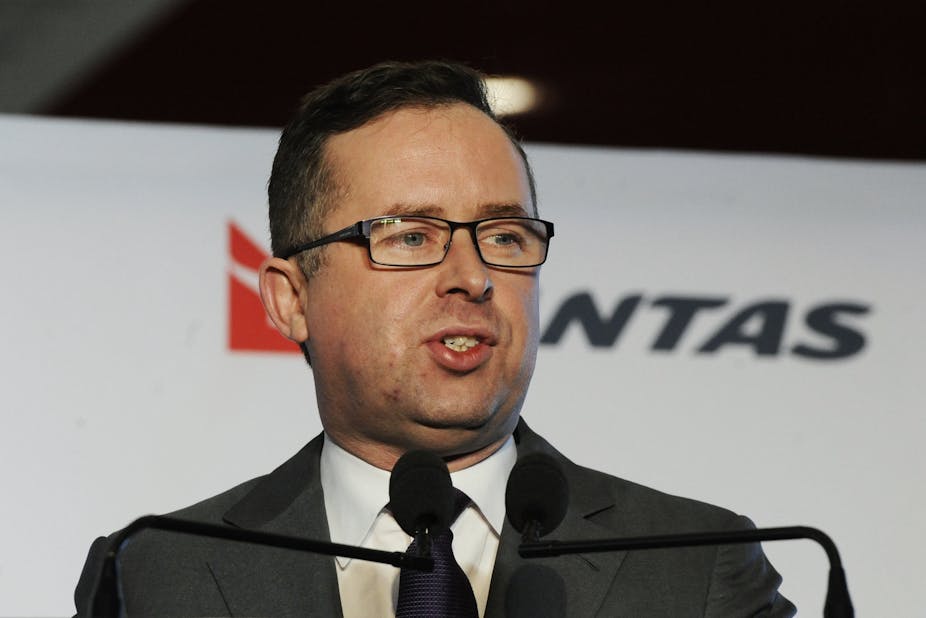Yesterday’s Qantas guidance of a first-half loss of up to A$300 million is a continuation of poor financial performance which began in 2009.
It’s not since then that Qantas has delivered a return on equity greater than its cost of equity. And 2010 was the last time the airline paid a dividend to shareholders. The public is now looking for straight answers to two key questions. First, how has this arisen? Second, what are the implications for the future of Qantas?
The first question is the easiest to answer. The markets that Qantas operates in are extremely competitive, and this has increased markedly in recent years.
To the east there has been increasing competition from a number of carriers led by Emirates, and to the west the arrival of Virgin and Delta in 2009 resulted in significant price reductions on once highly profitable US routes. This limits what Qantas can charge passengers, and while there is much rhetoric about the Qantas brand, and the company being quintessentially Australian, there seems to be little evidence of the travelling public being prepared to pay a “premium” to travel on the flying kangaroo.
But competition is only part of the problem, and it’s certainly not a problem for travellers.
More problematic is the cost structure of Qantas and it is hard to miss the problem. Staff expenses account for 24–25% of total revenues and of the major expense categories it is the one that management has the most control over.
Qantas has a workforce of over 33,000 around the world, and the average expense per staff member is almost A$115,000. Much effort has been expended to reduce this, including the expansion of Jetstar where payments to comparable staff are materially lower than at Qantas. Information on the magnitude of these differences should be sought from Qantas management and while some might find the answers unpalatable it would quickly dispel the rumors that Jetstar is bleeding Qantas dry.
There is also the increasing employment of cheaper overseas staff such as New Zealand crew on trans-Tasman flights. This means the average expense per Australian staff member is even higher than the A$115,000 identified above.
Critically, there has been no reduction in the percentage of revenues paid to staff, and this is significantly higher than that of its competitors. Singapore Airlines is a major competitor for Qantas, when comparison is made with allowance for size differences (measured as available seat kilometers), Singapore Airlines has 30% less staff and the average expense per staff member is 30% less. This is not the place to consider how the current situation arose, but it is the problem and it is clearly not sustainable.
It is more difficult to determine the implications and options for the future.
Qantas has announced it will reduce staff by 1,000 and make cost savings of $2 billion over 3 years. This is too little too late for a return to acceptable levels of profitability, and this is important.
Without profitability, or at least the prospect of profitability, there is little prospect of shareholders being enticed to commit additional equity to the business, and this applies equally to domestic and international investors.
Equally, lenders will become increasing concerned about lending billions of dollars to finance aircraft acquisitions. Qantas is now on credit watch by Moody’s following downgrades to its rating in 2012. A further downgrade would be disastrous and materially increase Qantas’ borrowing costs. Without a return to profitability and access to appropriate finance Qantas will die the death of a thousand cuts.
Qantas has sought government aid, through either an equity investment from the government, or a guarantee of debt. In both cases this would end up being a taxpayer subsidy for a private sector company, and the cause of the problem would not be addressed.
An alternative would be to offer protection, but this would simply pass the costs directly to the travelling public. This is equally problematic as we know travellers are price sensitive and such an action if successful would likely boost the profitability of international airlines operating in Australia. Accordingly, I don’t believe the Government should intervene, as only fools rush in where angels fear to tread. This is a problem for Qantas management and staff to resolve – it is their future.

